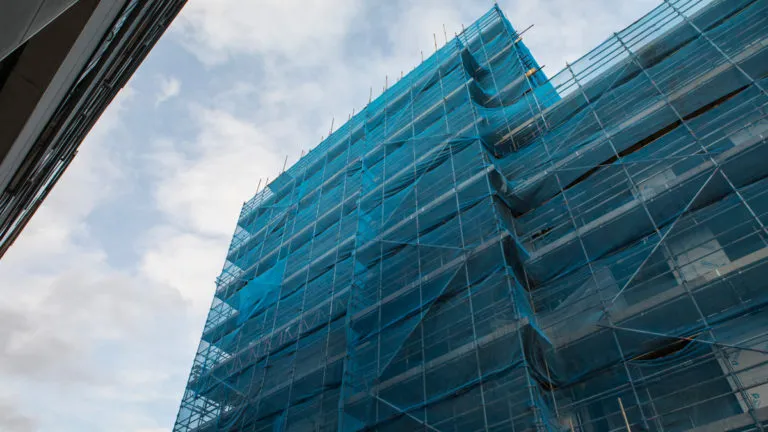Permitted development scandal: homeless families put at risk
Published: by Cecil Sagoe

In the last few weeks, the controversial permitted development system has been receiving renewed media attention. This is partly because Labour, in a welcome move, have now pledged to scrap permitted development rights for the delivery of new homes.
This pledge comes off the back of reports last year, which highlighted the small, poor quality homes coming through the permitted development system, and a get-out clause that exempts schemes from providing vital social and affordable housing.
But, recent coverage of the permitted development system has also shed light on a far greater scandal: ‘slum housing’ coming from this system, which is being used for homeless families.
The scandal of permitted development rights
Permitted development rights (PDR) are an automatic, national grant of planning permission for certain classes of development. These developments therefore do not need full planning permission from local authorities to go ahead.
Instead, in what represents a significant deregulation of the planning system, local authorities can only assess an extremely limited set of issues in these cases. For example, flood risk and the impact of a proposed PDR scheme on transport and highways.
Since 2013, the permitted development system has come to cover the conversions of office blocks, agricultural buildings and warehouses into residential properties. Regular readers of our blog will know that we have major concerns about the permitted development system.
This is because these schemes do not need to comply with a local authority’s planning policies, meaning there is little that a council’s planning department can do to prevent shoddy conversions. Similarly, permitted development schemes also aren’t subject to section 106 requirements. So, local authorities are unable to get any social or affordable housing contributions from these conversions.
Research we conducted last year highlighted the scale of this problem.
Over 2015-16 to 2017-18, we have lost out on over 10,000 potential affordable homes – including social homes – in urban areas. This is a direct result of housing schemes coming through the permitted development system rather than the planning system.
These potential losses are scandalous at a time where there are nearly 277,000 recorded homeless people in England who are in desperate need of a genuinely affordable social home.
If this wasn’t enough, these poor-quality, ‘rabbit-hutch’ schemes – which are not producing social housing – are now being used as temporary accommodation for families who can’t find anywhere affordable to live.
Issues with permitted development schemes
So, why is this such a problem? There are three main causes for concern:
1. ‘Rabbit-hutch’ housing
As permitted development schemes do not require planning permission, they cannot be made to comply with any space standards. National guidance for most housing development recommends that the minimum gross internal floor area for a one bed home should be at least 37 square metres, inclusive of storage space.
However, the permitted development system has led to the delivery of homes as small as 13 square metres. This is smaller than your average living room.
The BBC highlights that space has been a key problem within Terminus House in Harlow, Essex. This is an office-to-residential permitted development conversion carried out by Caridon Property, which has been used as temporary accommodation since 2018. Here, homeless families with children are crammed into tiny ‘studio flats’ where they have ‘no room’ and have to ‘eat, drink and sleep in their beds’.
It’s truly shocking that homeless families are being accommodated in such terrible conditions.
2. Housing schemes on industrial estates
PDR conversions are also leading to homes being provided in locations that are wholly inappropriate for housing.
A leading review into our planning system – the Raynsford Review of Planning – highlighted that PDR conversions of office blocks into housing are resulting in homes being delivered on isolated industrial estates that lack basic social services and amenities.
This has resulted in homeless families, many of who are lone mothers with young children, being accommodated in miserable conditions on polluted industrial sites. These sites can be many miles from families’ home areas, have no safe spaces for children to play, and have poor transport links to schools, doctors’ surgeries and shops.
3. Public money feeding into this system
In privately owned temporary accommodation, the homeless families are expected to pay very high rent levels, increasingly charged to the council at nightly, hotel-level rates. Most homeless families can’t afford this and so will have to claim the maximum Local Housing Allowance to which they’re entitled.
Where any further shortfalls exist between the rent being charged for these poor quality schemes and a household’s ability to pay, the council has to make up the difference.
The long and short of this is that vital housing benefit and council funds are being paid to temporary accommodation providers on permitted development schemes. While they are accommodating vulnerable homeless people (including children, disabled people, and people with trauma and health problems), they are doing so in cramped and sometimes unsafe conditions.
We must do better
Is this really the standard of accommodation the government wants for homeless families?
With no local authority oversight over building design, how can we prevent the delivery of schemes that are of such bad quality that they pose health and safety risks to residents? How can we ensure that residents will be safely evacuated if a fire ripped through a block?
Rather than extending the permitted development system to deliver more new housing, the government must change tack.
As our report into the future of social housing points out, a crucial part of redressing our homelessness crisis is delivering high quality, genuinely affordable social housing at scale in appropriate locations across the country. The permitted development system will not do this. A well-resourced and regulated planning system, alongside land reform and sufficient public grants, can.